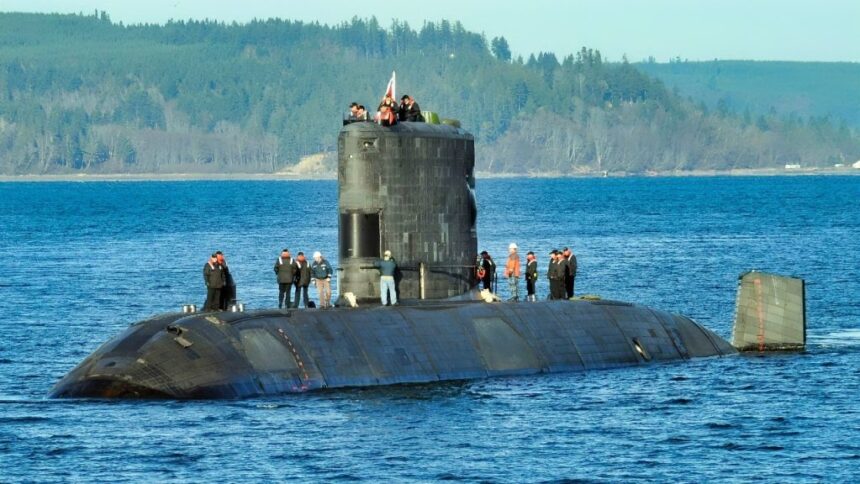In the frigid waters of Canada’s Arctic frontier, a silent crisis is unfolding. The Royal Canadian Navy’s Victoria-class submarine fleet—once touted as the backbone of Canada’s underwater defense capabilities—now sits largely immobilized, with only one of four vessels currently operational. This deteriorating situation represents not merely a technical challenge but a significant national security vulnerability at a time when Arctic sovereignty has never been more contested.
“We’re effectively operating with a quarter of our submarine capacity,” explains Vice-Admiral Angus Topshee, Commander of the Royal Canadian Navy. “This isn’t just about military readiness—it’s about Canada’s ability to assert sovereignty in waters that are increasingly trafficked by foreign powers.”
The Victoria-class submarines, purchased from the United Kingdom in 1998 for $750 million, have been plagued by maintenance issues, parts shortages, and what critics describe as chronic underfunding. HMCS Corner Brook has been undergoing extensive repairs since 2018, while HMCS Windsor and HMCS Chicoutimi are both laid up for maintenance that has extended far beyond scheduled timeframes. Only HMCS Victoria remains operational, but even its deployment capacity is limited.
The timing couldn’t be worse for Canada’s strategic interests. As climate change accelerates ice melt in the Arctic, previously inaccessible shipping routes are opening up, attracting increased attention from Russia and China. Both nations have significantly expanded their submarine fleets and Arctic presence in recent years, with Russia deploying sophisticated nuclear submarines in northern waters and China declaring itself a “near-Arctic state” with growing interests in the region.
Former defense minister Harjit Sajjan acknowledged the gravity of the situation, stating, “Submarine capability is not a luxury for a nation with the world’s longest coastline—it’s an absolute necessity for national defense.”
The crisis extends beyond the vessels themselves to the specialized personnel required to operate them. Naval officials report concerning attrition rates among submarine crews, with trained operators leaving for private sector positions after becoming frustrated by limited at-sea opportunities. The technical expertise required to maintain and operate these complex vessels takes years to develop and cannot be quickly replaced.
“Each submarine requires approximately 60 highly trained personnel to operate effectively,” notes maritime security analyst Margaret Weston. “When submarines aren’t regularly deployed, it creates a vicious cycle where crew members lose both skills and motivation, further compromising operational readiness.”
The financial implications are equally troubling. The Parliamentary Budget Officer recently estimated that keeping the aging Victoria fleet operational through 2040 would cost Canadian taxpayers approximately $5.5 billion—significantly more than originally projected. This figure doesn’t include the eventual replacement costs, which could exceed $10 billion based on comparable submarine acquisition programs in allied nations.
Internal Department of National Defence documents reveal growing concern about Canada’s submarine capability gap. A classified assessment prepared for senior leadership warns that “the current state of the Victoria-class fleet presents substantial risks to Canada’s ability to monitor subsurface activities in our exclusive economic zone, particularly in Arctic waters where foreign submarine activity has increased by approximately 40% since 2018.”
Maritime security experts emphasize that submarines provide unique capabilities that surface vessels and aerial surveillance cannot replicate. Their ability to operate covertly for extended periods makes them invaluable for intelligence gathering, surveillance, and deterrence—especially in the vastness of Canada’s Arctic waters.
“Surface ships and aircraft can be easily tracked and monitored,” explains naval strategist Commander (Ret.) James Harrington. “Submarines operate in what we call the ‘silent service’ for a reason—they can monitor foreign activities without being detected themselves, providing crucial strategic advantage and intelligence.”
The government faces difficult decisions about the future of Canada’s submarine capability. Defence Minister Anita Anand has acknowledged the situation requires “urgent attention,” but concrete plans for either substantial fleet investment or replacement remain undefined. Meanwhile, opposition critics argue the government has allowed a critical national security asset to deteriorate beyond acceptable limits.
As geopolitical competition intensifies in the Arctic region, the question becomes increasingly pressing: can Canada afford to remain effectively absent from the subsurface domain that is crucial to asserting sovereignty and protecting national interests? With Russia deploying next-generation submarines and China building impressive underwater capabilities, Canada’s single operational submarine represents a capability gap that potential adversaries are undoubtedly aware of.
As world powers jockey for position in the changing Arctic landscape, will Canada regain its undersea presence before it’s too late, or will this submarine crisis mark a historic retreat from effectively defending one of our nation’s most strategic frontiers?
























